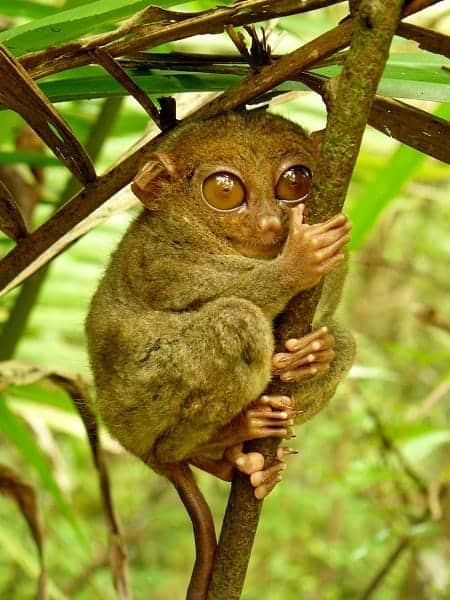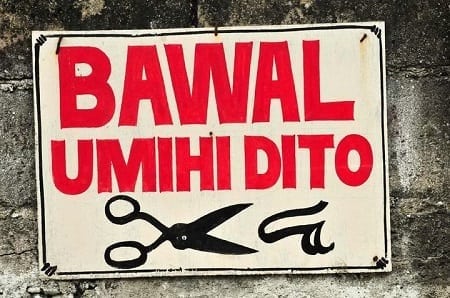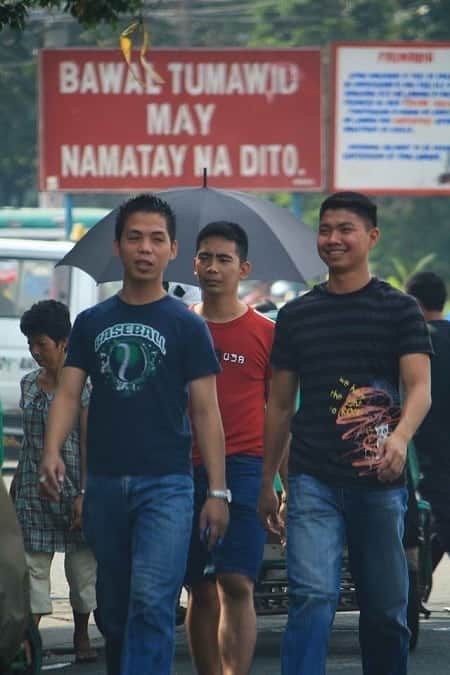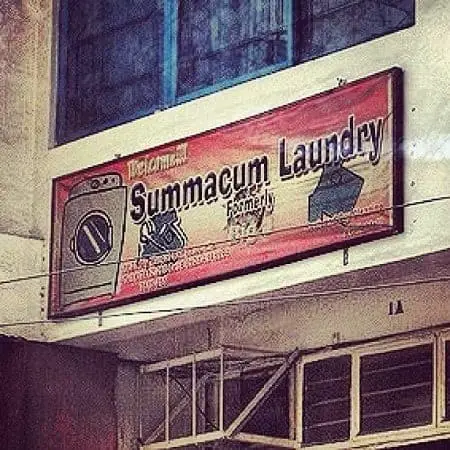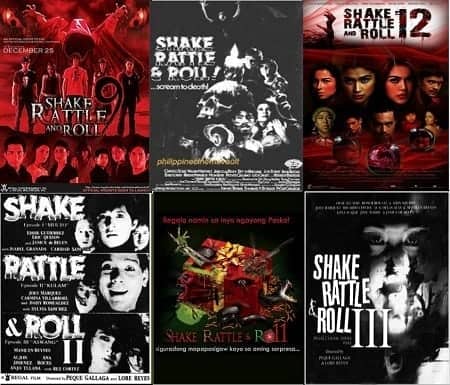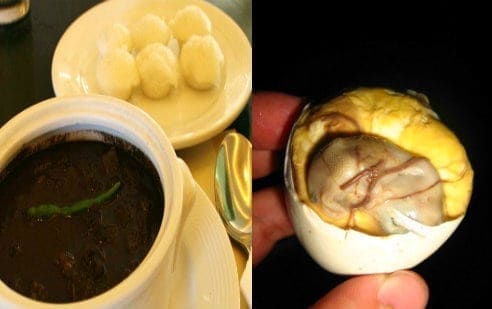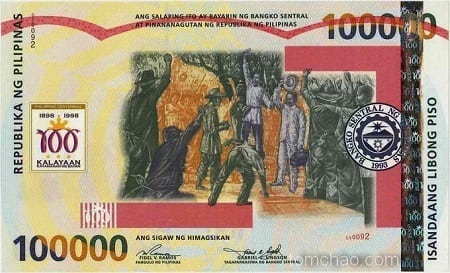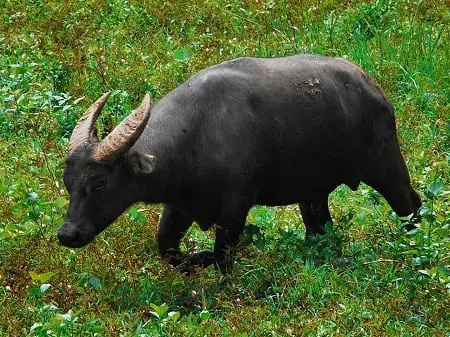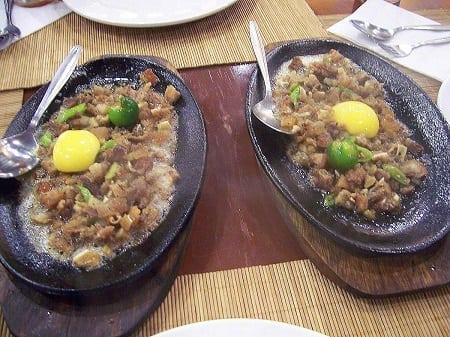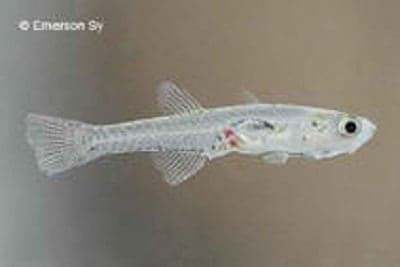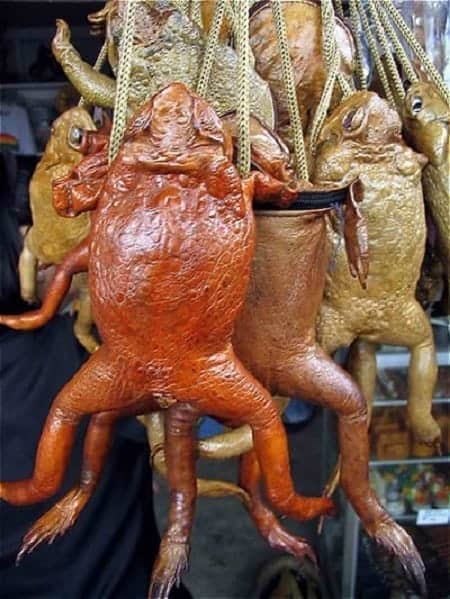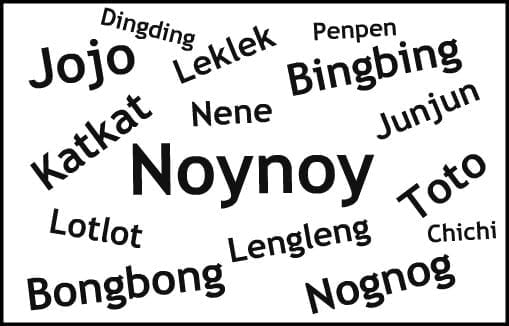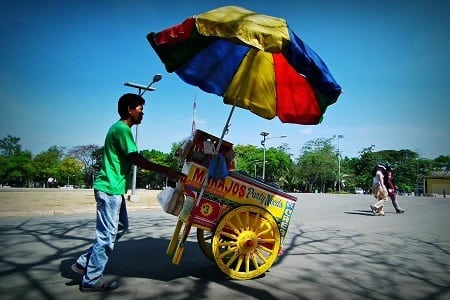27 Things You’ll Only See in the Philippines
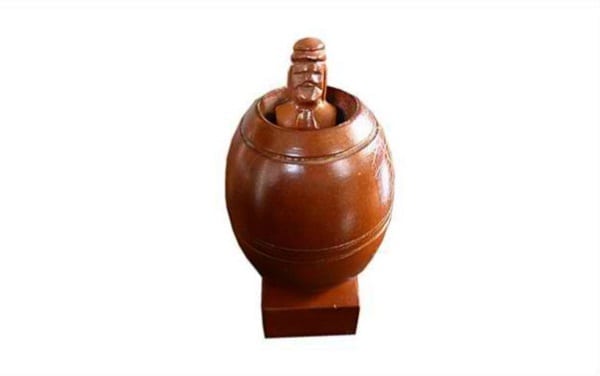
Some say Filipinos are the greatest imitators–I beg to differ.
Although one can clearly see the Western and even Korean influences in our society today, we still have several things that are uniquely Filipino.
Also Read: 22 Things We No Longer See in Manila
Brace yourself because we’re listing down 27 things that you can only see and find in the Philippines.
1. The world’s largest pair of shoes
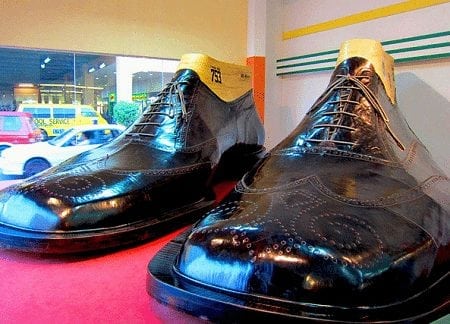
This humongous pair of shoes is the world’s largest, according to the Guinness Book of World Records which recognized it in 2002. It can fit in 30 people simultaneously and were painstakingly made by 10 people within 77 days.
Each shoe measures 5.29 meters long, 2.37 meters wide and 1.83 meters high. The total cost of the shoes was reportedly 2 million pesos, big enough to buy someone several pairs of regular-sized shoes.
2. The Jeepney
Jeepneys are the most popular means of transportation here in the Philippines. The fare is relatively cheap, but that’s because jeepneys don’t have an air conditioner and are always packed with too many passengers.
Interesting fact: There are several theories on how “jeep” got its name but the general consensus is that it originated from “GP” which means either “General Purpose” or “Government Purpose,” describing the military jeep used in WWII.
There are also claims that the vehicle was named after Eugene the Jeep, a popular character in the Popeye cartoons. For most historians, however, “jeep” was first popularized in the media by Irving “Red” Hausmann, a test driver who coined the term after he overheard some soldiers referring to the vehicle as “jeep.”
Source: Jeep ni Juan: A History of the Jeep in the Philippines, pp. 20-21.
3. The Philippine Tarsier
One of the world’s smallest primates, the Philippine tarsier (Tarsius syrichta) is a nocturnal animal commonly found in the islands of Samar, Leyte, Bohol, and Mindanao.
Interesting fact: Although some people consider the Philippine tarsier as “the world’s smallest monkey,” this is actually not the case.
Monkeys belong to the suborder of anthropoids. Tarsiers, on the other hand, are often classified as prosimians because they’re closely related to lemurs and lorises.
4. Bogie Rider

Picture: AFP/GETTY
Bogie Rider is one heck of a badass dog. Wearing his own helmet–which is certified, by the way–he and his owner, Gilbert Delos Reyes, would ride on a motorcycle as they travel around Manila and as far as Baguio, Ilocos, and even Boracay.
5. These WARNING Signs
6. And these people who say “I don’t give a f**k!”
7. The Cebu Dancing Inmates

The Cebu Dancing Inmates is a collective name referring to the prisoners of Cebu Provincial Detention and Rehabilitation Center (CPDRC) whose claim to fame was their rendition of Michael Jackson’s “Thriller” video. The dance routines are actually part of their daily exercise and rehabilitation program.
Interesting fact: Aside from their world-renowned dancing inmates, CPDRC is also aspiring to have their own world-class boxers. At least 47 detainees–whom they called “Supermax Boxing Team”–have already been training to achieve that goal.
8. Hobbit House, the world’s weirdest themed restaurant

Founded in 1973 by a former college professor and Peace Corps volunteer Jim Turner, the Hobbit House is the only restaurant in the world entirely staffed by midgets. It recently topped CNNGo‘s list of “world’s weirdest themed restaurants.”
Located at M. H. del Pilar Street in Ermita and now with a new branch in Boracay, the Hobbit House was inspired by Tolkien’s “Lord of the Rings” books. The place features candlelit interiors and paintings depicting some scenes from the epic trilogy.
The restaurant was also recognized in the past by iExplore.com and Lonely Planet for having the “smallest waiters in the world.”
9. These signboards that will leave you scratching your head
10. The world’s first bamboo and rattan roadster
Made from natural fibers and materials, this Phoenix Roadster is Kenneth Cobonpue’s answer to the world’s growing demand for biodegradable cars.
The Phoenix can last up to 5-10 years but unlike standard cars, this eco-friendly alternative can be recycled without wasting too much energy and money. Created by Cobonpue in collaboration with Albrecht Birkner, the Phoenix Roadster was built in only 10 days using nylon, bamboo, rattan, and steel.
No engine has been installed yet, but the makers are considering the addition of an electric motor to power the roadster.
11. These hilarious business establishment names
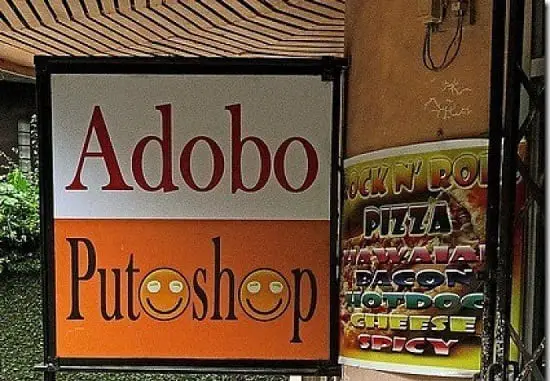

12. This never-ending horror film series
Currently produced by Regal Films, “Shake, Rattle & Roll” is a horror film series in the Philippines with the most number of movie installments (14 and still counting).
The first movie was released in 1984 under the now-defunct Athena Productions. The title was based on a song of the same name.
13. These disgustingly delicious Filipino foods
Both dinuguan (pork blood stew) and balut (boiled duck embryo) may not be exclusively found in the Philippines, but there’s something special about how they are cooked or eaten here that make these delicacies uniquely Pinoy.
Also Read: Why Do Filipinos Love To Eat Rice? (And Other Yummy Pinoy Food Facts)
Filipinos consider balut as one of their favorite street foods, and they prefer to eat it with salt, chili, and vinegar to fully savor its flavors. Dinuguan, on the other hand, is usually cooked with vinegar and long green pepper, then serve it with delicious puto or steamed rice cake.
14. Villa Escudero’s amazing Waterfalls Restaurant
Situated in the town of Tiaong in Quezon Province, Villa Escudero is a resort like no other. In its restaurant, visitors are welcomed by mouth-watering Filipino dishes served in bamboo dining tables.
And here comes the best part.
You can enjoy your dining experience while waterfall flows in the backdrop, and with crystal-clear spring water running over your feet. Surely an experience you should never miss!
15. The world’s largest single banknote
Measuring 355.6 mm by 215.9 mm (14″ x 8 1/2″), this 100, 000-peso note is officially the world’s largest legal tender note in terms of size. It was created by the Philippine government in celebration of the country’s 100 years of freedom from Spain.
The note–which is almost as the same size as a sheet of legal paper–was initially offered to collectors who were willing to buy it at a pre-issue price of 180, 000 pesos. Only 1, 000 pieces of this limited-edition note were issued.
16. The Tamaraw
Declared critically endangered since 2000, the tamaraw or Mindoro dwarf buffalo (Bubalus mindorensis) is the ONLY bovine endemic to the Philippines, specifically to the island of Mindoro.
Interesting fact: The tamaraw is not a subspecies of the more popular carabao. Unlike the latter, tamaraw has distinct markings on its face and shorter, V-shaped horns.
17. “Poong Nazareno” (The Black Nazarene)
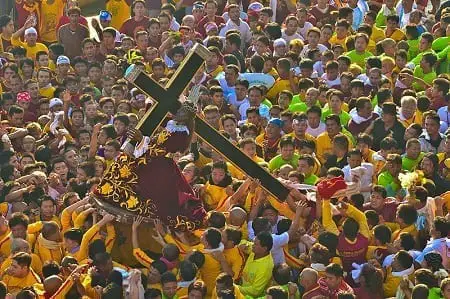
The “Poong Nazareno” is an iconic life-sized statue of Jesus Christ carrying the cross to the Calvary. It is said that the statue was originally fair-skinned, but turned black after it was engulfed by a fire inside a ship during the Manila galleon expedition from Mexico.
Also known as the Black Nazarene, the statue–which many devotees claim to be miraculous–is currently enshrined in the Quiapo Church.
18. The Sizzling “Sisig.”
Sisig is a popular Filipino dish usually prepared by chopping boiled pig’s ear and liver, then serving it with chili peppers and sour liquid–usually calamansi or vinegar. The term “sisig” is actually a Kapampangan word which means to “snack on something sour.”
Interesting fact: Sisig is said to be invented in the 1970s by Lucita Cunanan, popularly known as the “Sisig Queen.” Her signature pork dish brought fame not only to her restaurant, “Aling Lucing’s,” but also to the entire city of Angeles in Pampanga. Sadly, Cunanan was hammered to death in her home in 2008.
19. Sinarapan, the world’s smallest food fish
The sinarapan (Mistichthys luzonensis) was recognized by the Guinness Book of World Records as the smallest commercially-harvested fish. It is only found in the Philippines, endemic to Lake Buhi in Bicol River. A type of goby, the sinarapan is characterized by a transparent body which measures 12.5 millimeters. It is currently facing possible extinction due to overexploitation of its habitat.
Interesting fact: The sinarapan may be the “smallest food fish,” but it’s not the “smallest fish” ever known. That recognition is given to the dwarf pygmy goby (Pandaka pygmaea), locally known as ‘tabios’ and is commonly found in the Philippines and Indonesia.
20. This weird-looking frog purse
Some people say it looks horrible but this coin purse–made entirely from real tanned frogs–is a common souvenir item you can find in several tourist shops across the Philippines.
21. The iconic “Barrel Man.”
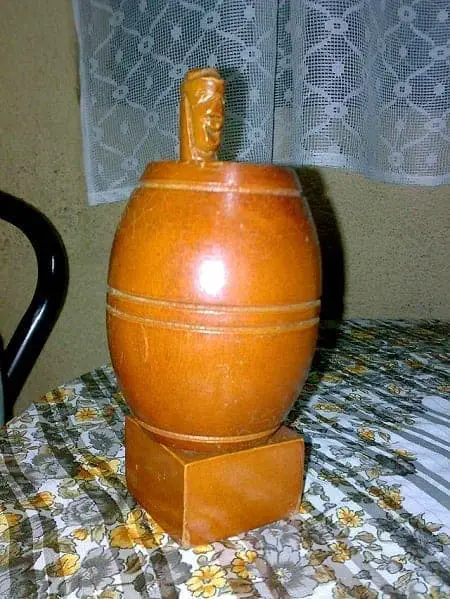
The “barrel man” is a wooden souvenir doll with a twist: Simply lift the round barrel hiding the little man and you’ll immediately see his ding dong staring back at you!
An icon of Philippine culture and arts, this curious little toy can be found in several gift shops or souvenir stores in Baguio City.
22. The yummy “Halo-halo.”
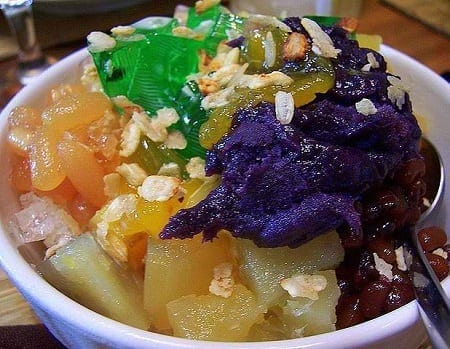
23. The Jejemon Phenomenon

Jejemon is a pop culture phenomenon that culminated in 2010, much to the chagrin of those who couldn’t understand their ‘language.’ As UrbanDictionary.com puts it, a jejemon is “someone who has managed to subvert the English language to the point of incomprehensibility and online lynch squads.”
Interesting fact: Jejemons can be categorized as “mild,” “moderate,” or “terminal,” depending on how incomprehensible their language is.
24. Repetitive Nicknames
Theories abound to explain why Filipinos love to give nicknames that repeat the same syllables. One I’ve found sensible is rooted in linguistics. According to this theory,
“….all languages in the Philippines belong to the Malayo-Polynesian family of languages, which is itself a member of the Austronesian clan. As such, our languages are agglutinative – i.e., we extensively glue words together to form new words.”
25. The Habal-Habal or “Skylab.”
The habal-habal is a mode of transportation in the Philippines that was born out of people’s need to travel rough terrain and narrow roads. But this improvised motorcycle is not for the faint of heart: It is often ridden beyond its capacity, which means it could carry up to 10 passengers–including their baggage.
26. This “dirty ice cream” on cart
27. And finally, those “epal” posters of attention-seeking politicians announcing their “good deeds” (as if we care)
FilipiKnow
FilipiKnow strives to ensure each article published on this website is as accurate and reliable as possible. We invite you, our reader, to take part in our mission to provide free, high-quality information for every Juan. If you think this article needs improvement, or if you have suggestions on how we can better achieve our goals, let us know by sending a message to admin at filipiknow dot net
Copyright Notice
All materials contained on this site are protected by the Republic of the Philippines copyright law and may not be reproduced, distributed, transmitted, displayed, published, or broadcast without the prior written permission of filipiknow.net or in the case of third party materials, the owner of that content. You may not alter or remove any trademark, copyright, or other notice from copies of the content. Be warned that we have already reported and helped terminate several websites and YouTube channels for blatantly stealing our content. If you wish to use filipiknow.net content for commercial purposes, such as for content syndication, etc., please contact us at legal(at)filipiknow(dot)net

